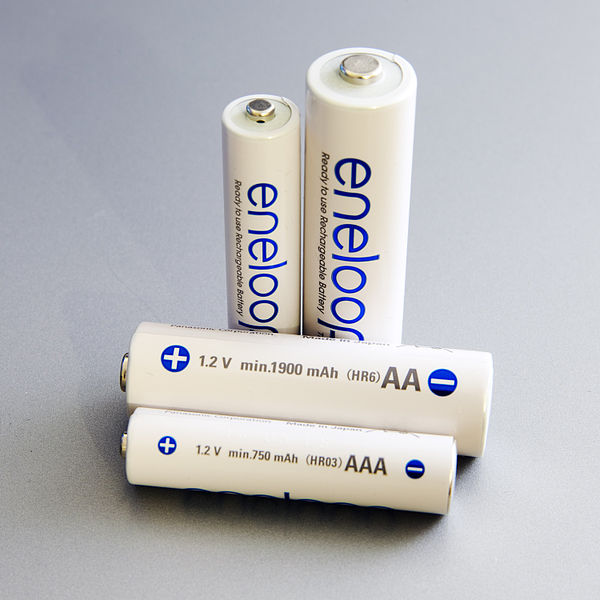The Ford Ranger EV is a battery electric compact pickup truck that was produced by the Ford Motor Company and was the automaker's first all-electric production vehicle. It was produced starting in the 1998 model year through 2002 and is no longer in production. It is built upon a light truck chassis used in the Ford Explorer. Most vehicles were sold with nickel–metal hydride batteries (NiMH). A few vehicles with lead-acid batteries were sold, but most units were leased for fleet use.
Ford Ranger EV
Charge door in grille distinguishes the EV from the front
Under the hood
Power controller under bed at rear
Nickel–metal hydride battery
A nickel–metal hydride battery is a type of rechargeable battery. The chemical reaction at the positive electrode is similar to that of the nickel-cadmium cell (NiCd), with both using nickel oxide hydroxide (NiOOH). However, the negative electrodes use a hydrogen-absorbing alloy instead of cadmium. NiMH batteries can have two to three times the capacity of NiCd batteries of the same size, with significantly higher energy density, although only about half that of lithium-ion batteries.
Modern Ni–MH rechargeable cells
Disassembled NiMH AA battery: Positive terminal Outer metal casing (also negative terminal) Positive electrode Negative electrode with current collector (metal grid, connected to metal casing) Separator (between electrodes)
NiMH cell that popped its cap due to failed safety valve
High-power Ni–MH battery of Toyota NHW20 Prius, Japan








